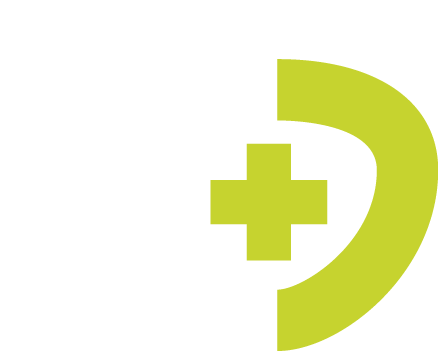Croatia – improving data, diving into planning and increasing skills
The key authorities in the Croatian health system are the Ministry of Health, the Croatian Health Insurance Fund, (CHIF), the Croatian Institute of Public Health (CIPH), and the county authorities. The Ministry of Health is the main government body responsible for health system stewardship, health policy development, planning and evaluation, and regulatory standards, training of health professionals including the determination of number of medical specialists per population required on a county level. The CHIF is the sole insurer in Croatia’s mandatory health insurance and offers also complementary health insurance, in particular to those sponsored by the state, but does not act as a true purchaser of care. The CIPH is a subsidiary organisation to the Ministry but acts independently and cooperates closely with the Ministry on health policies and measures.
HFW data
As far as data is concerned, the Ministry of Health (MOH) uses data available from Croatian Health Insurance Fund (CHIF) as well as Croatian Institute of Public Health (CIPH), i.e. the National Register of Health Care Providers. Also, as necessary, the MOH requests data and information about health workers from the health institutions themselves, most often from hospitals.
All health workers and associates are registered in the National Register of Health Care Providers, established in 1991 at the CIPH. Every health care provider (including those in the private sector) is obliged to submit information on all the health workers it employs, including their name, age, gender, date of birth, profession, entry or departure from service, and any change of position or professional level.
Some of the ongoing goals of the register are to determine how many doctors (health workers) leave the health service, how many physicians start and finish their specialty training and continuous monitoring of the distribution (by age, level of healthcare, geographical). Additional information about the start of specialist training, apart from health institutions, the register also receives from the Ministry of Health, regardless the place of work of health worker (state or private).
Chambers of health also have certain data on health workers, as well as state public bodies, as National Bureau of Statistics.
The Ministry of Science and Education has databases and applications that can be accessed and that offer certain statistical and other information about secondary schools, educational programs. It also has an information system of higher education institutions through which the required data can be obtained.
Information on job vacancies can be obtained from the Croatian Employment Service.
The aforementioned stakeholders in the health system have competences or responsibilities for parts of human resource management in health care, but it is not possible to identify any organization or structure that has responsibility for strategic planning and human resource management.
(In)sufficient use of existing data
Despite the existence of various fairly high-quality data, it can be said that they are still underused and analyzed.
Data on the average retirement age, were not used although, they could be calculated. Namely, the National Register of Health Care Providers at the Croatian Institute of Public Health records for each health worker in the health system the date of termination of work or retirement.
Data on premature departure from the health care system were not used, although in this case the database of the National Register of Health Care Providers could also be useful, in which every termination of employment is marked, regardless of the reasons for the termination of employment.
So far, data for calculating full-time equivalents (FTE) have also not been used.
There is also no clear analysis of what proportion of graduates of certain professions are employed in healthcare, or become part of the category of those practising.
Data on foreign trained graduates are available from the Croatian Medical Chamber for doctors and the Croatian Nursing Council for nurses (stock). Until now, the data did not refer to annual inflows, but only to the total number. The same chambers calculate data on outflows using data from the Croatian Pension Insurance Institute.
A health workforce planning programme is currently missing
The National Health Development Plan (2021 to 2027) includes strategies to retain the health workforce in the profession by targeting job dissatisfaction through plans to improve working conditions, especially for physicians, and salaries, for healthcare workers employed by public providers, and through plans to reduce administrative burden of physicians. However, the current distribution and use of available labour capacity in health care still lack a workforce planning programme that would take into account medium and long-term projections.
The allocation and recruitment of healthcare workers for primary and outpatient segment is organised at county level, with no central planning, and it is determined by an outdated provider network definition, which does not account for current population structure, its distribution across Croatia and its healthcare needs, nor for the age structure of practicing physicians. The National Development Plan foresees an establishment of a human resource management framework, which, if brought to the central level, would help the current situation and relief the county authorities of their uneasy task to secure adequate workforce without having the proper tools to influence the workforce capacity.
Future challenges and progress regarding HWF
Data monitoring, the use of planning processes and methodologies, and the existing knowledge and management skills of healthcare workers certainly have opportunities for improvement.
It was decided to choose a planning model with the possible use of already existing data as well as the provision of additional necessary data.
In order to provide additional data for the purpose of planning healthcare workers, activities are underway that will enable the connection of the National Register of Healthcare Providers with the Croatian Pension Insurance Institute.
An important activity is also the further contact with the health chambers regarding their possibilities for securing data on the annual arrivals, inflows of foreign-trained graduates of health workers (doctors, nurses).
A central body responsible for human resource management in the health system should be established, with responsibility for strategic planning and human resource management.
In terms of skills and knowledge related to planning and management, future education is very important and necessary in order to improve the planning process. Among other things, thanks to the Heroes project, cooperation with Nivel – Netherlands Institute for Health Services Research has been made possible. Nivel will hold an educational course on the application of the Excel planning model in Croatia. We believe that this will create a core of people who will adopt and further develop the skills necessary to improve the planning process of healthcare workers.




